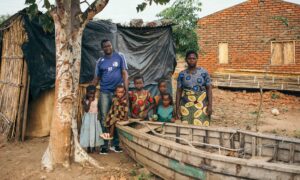
Gladys Austin is a climate disaster survivor. In March last year the 39-year-old mother of six stood in ankle-deep water in the room where her family slept. She tried to stay calm as the relentless rain battered her home. Her village’s trading centre, school and the chief’s home, built on an elevated foundation, were all submerged.
The storm destroyed the sandbars on Malawi’s Ruo River, where she and her husband, Biyeni Twaya, 46, fished as well as the field they had farmed since their youth, growing maize, beans and tomatoes. Goats, ducks and chickens, bags of grain that Austin had saved over the years, were all washed away. She estimates they were worth 6m kwacha (£2,700).
Cyclone Freddy, which ripped across the southern Indian Ocean, devastating swathes of Mozambique, Madagascar and Malawi, was the longest-recorded tropical storm in history. By the time it subsided, after five weeks of destruction, Austin and the 5,000 residents of Makwalo village in Malawi’s southern Nsanje District had lost everything.
The village chief, Meke Nkhandwe, ordered everyone to evacuate. Some people went to stay with relatives or friends. But Austin and her family squatted in their flooded home for nearly three months until, in June, they reluctantly moved to Namiyala refugee camp, about six miles away. She says their attachment to their land and concern over conditions at the camp kept them from leaving. “I was in shock, but eventually had to keep moving for us to survive,” she says.
